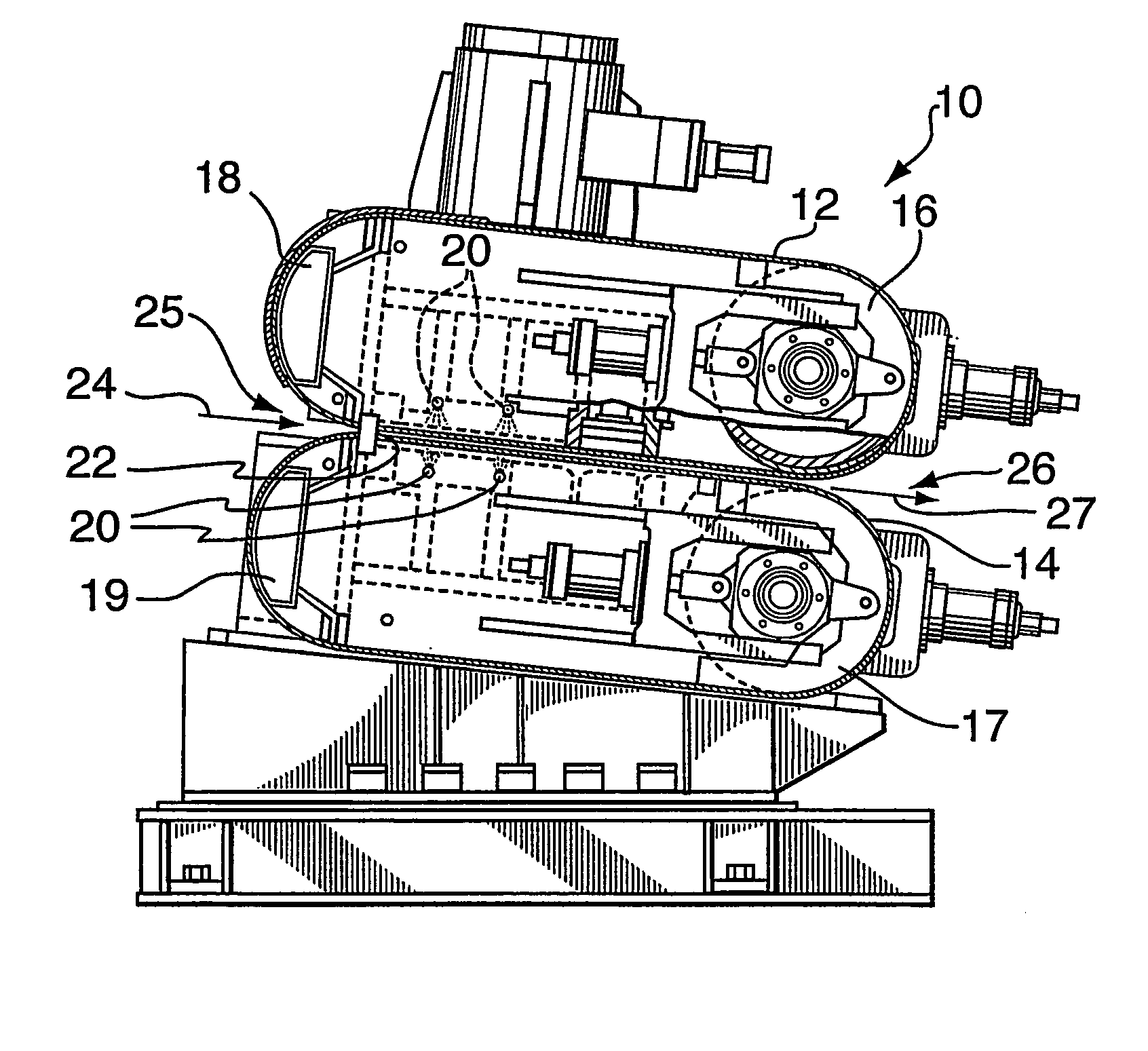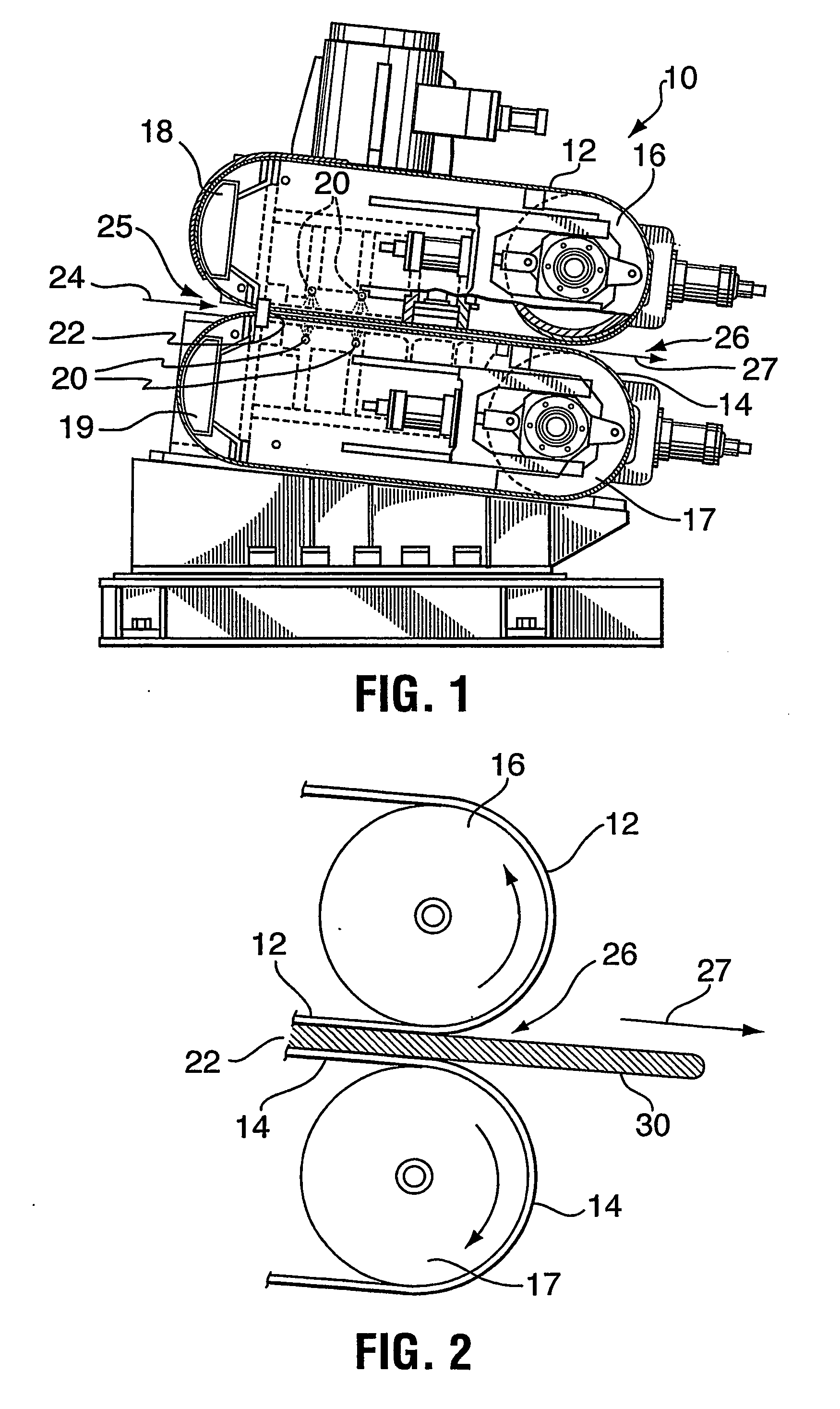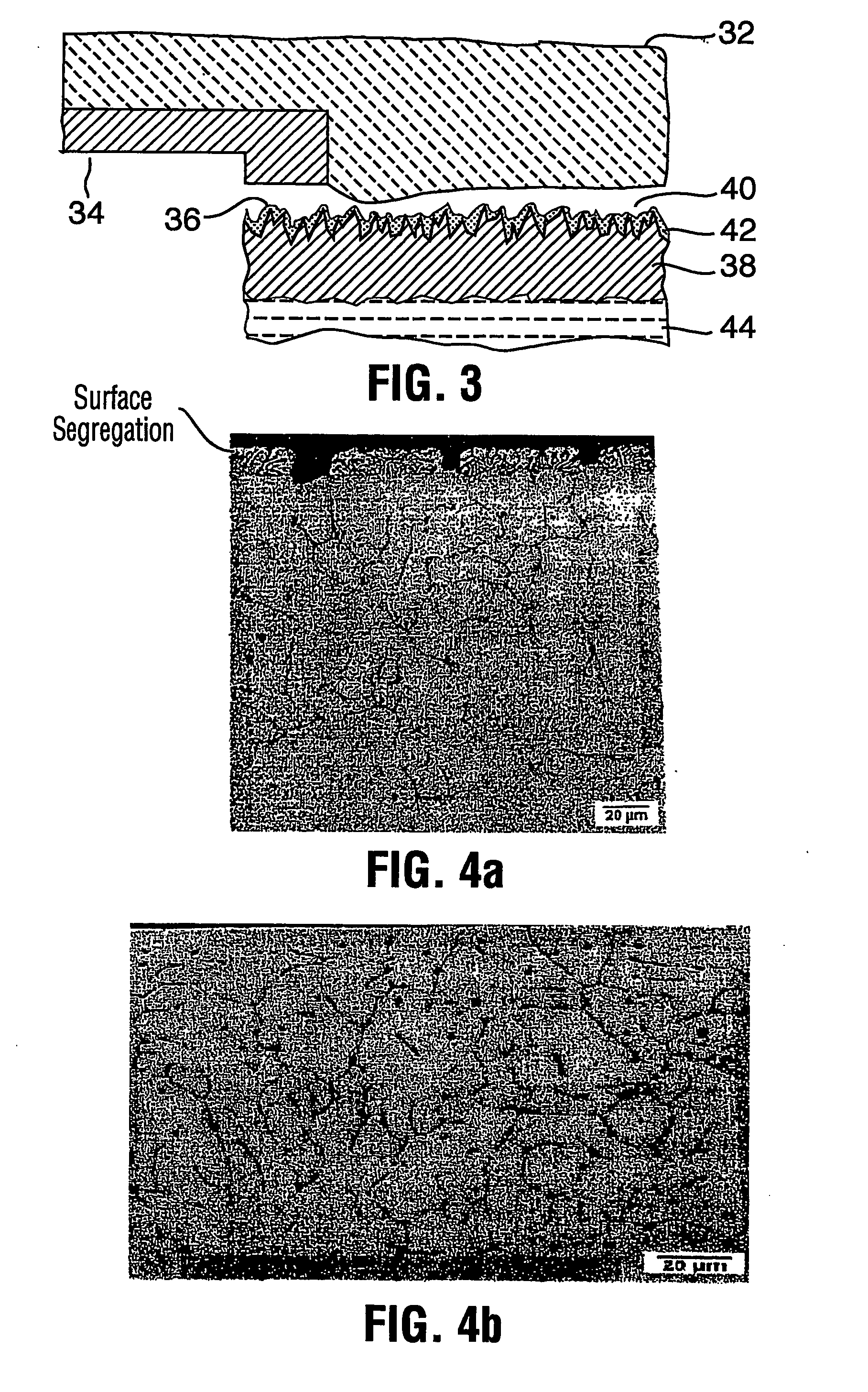Belt Casting Of Non-Ferrous And Light Metals And Apparatus Therefor
- Summary
- Abstract
- Description
- Claims
- Application Information
AI Technical Summary
Benefits of technology
Problems solved by technology
Method used
Image
Examples
example 1
[0042] An aluminum alloy typically used for a typical Al—Fe—Si foil products (AA1145) was cast at 10 mm thickness each on belts of 0.060 inch thick of aluminum alloy AA5754 in a twin belt test bed. The belts were textured by applying a grinding belt to the surface to produce substantially longitudinal grooves having a roughness, measured transverse the grooves of about 25 micro-inches Ra (The surface roughness value (Ra) is the arithmetic mean surface roughness.). Comparative samples were also cast on heavily textured steel and lightly textured Cu belts. Micrographs of the surface of material cast on the steel and aluminum belts is compared in FIGS. 4a and 4b and shows that steel belts (FIG. 4a) result in the production of a surface segregated layer whereas aluminum alloy belts (FIG. 4b) did not. Radiographs of the interior of cast slabs produced on Cu and aluminum alloy belts are compared in FIGS. 5a and 5b, respectively, and show that Cu belts (FIG. 5a) induce shell distortion in ...
example 2
[0043] An aluminum Al—Mg (AA5754) alloy typically used for automotive applications was cast at 10 mm thickness each on belts of 0.060 inch thick of aluminum alloy AA5754 on a twin belt test bed. The belts were textured as described in Example 1. Comparative samples were also cast on lightly textured Cu belts. No casts were done on steel belts as the surface quality is excessively poor when cast on such belts. Radiographs (through-thickness X-ray prints) of the interior of cast slabs produced on Cu and aluminum alloy belts are compared in FIGS. 6a and 6b, respectively, and show that belts made of Cu (FIG. 6a) induce shell distortion in the material (areas appear as light patches in the radiograph) whereas Al (FIG. 6b) does not. Optical images were also made of the surfaces of the two castings and are compared for slabs produced on Cu and aluminum belts in FIGS. 7a and 7b, respectively. FIG. 7a shows the circular surface defects characteristic of shell distortion resulting from use of...
example 3
[0044] An aluminum Al—Mg—Si (AA6111) alloy also typically used for automotive applications was cast at 10 mm thickness each on belts of 0.060 inch thick of aluminum alloy AA5754 on a twin belt test bed. The belts were textured as described in Example 1. Comparative samples were also cast on lightly textured Cu belts. No casts were done on steel belts as the surface quality is generally poor when cast on such belts. Optical images were made of the surfaces of the two castings and are compared for slabs produced on Cu and aluminum belts in FIGS. 8a and 8b respectively. FIG. 8a shows that the surface quality resulting from use of a Cu belt in a caster of this type is again poorer than that resulting from use of an Al belt as illustrated in FIG. 8b.
PUM
| Property | Measurement | Unit |
|---|---|---|
| Thickness | aaaaa | aaaaa |
| Power | aaaaa | aaaaa |
| Yield strength | aaaaa | aaaaa |
Abstract
Description
Claims
Application Information
 Login to View More
Login to View More - R&D
- Intellectual Property
- Life Sciences
- Materials
- Tech Scout
- Unparalleled Data Quality
- Higher Quality Content
- 60% Fewer Hallucinations
Browse by: Latest US Patents, China's latest patents, Technical Efficacy Thesaurus, Application Domain, Technology Topic, Popular Technical Reports.
© 2025 PatSnap. All rights reserved.Legal|Privacy policy|Modern Slavery Act Transparency Statement|Sitemap|About US| Contact US: help@patsnap.com



